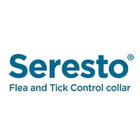
Fatty liver disease, medically known as hepatic lipidosis, is one of the most common and serious liver disorders in cats. It happens when an abnormal amount of fat builds up in the liver cells, interfering with the liver’s ability to function correctly. If not treated promptly, this condition can become life-threatening. This blog will explore hepatic lipidosis, its causes, signs to watch for, and how to manage it effectively.
What Is Hepatic Lipidosis?
Hepatic lipidosis is when fat builds up in the liver, overwhelming the organ’s ability to function correctly. The liver plays a vital role in digestion, detoxification, and nutrient storage. When it becomes overrun with fat, it can no longer process toxins or store energy efficiently, leading to a decline in your cat’s overall health.
This condition is most common in middle-aged, overweight cats, especially if they stop eating for any reason.
What Causes Fatty Liver Disease in Cats?
The most common trigger for hepatic lipidosis is a period of anorexia, or refusal to eat, lasting a few days or more. Cats have a unique metabolism. When they don’t eat, their body starts breaking down fat to use as energy. Unfortunately, their liver cannot handle large amounts of fat all at once, causing it to become overwhelmed.
Common causes of sudden appetite loss in cats include:
- Stress (new home, new pet, travel)
- Illness or infections
- Diabetes or pancreatitis
- Dental issues causing pain while eating
- Change in diet or food aversion
No apparent underlying cause is found in some cases, but the condition progresses rapidly.
Signs and Symptoms to Watch For
Recognizing the early symptoms of fatty liver disease is crucial for timely intervention. Keep an eye out for the following signs:
- Drastic weight loss
- Lethargy or weakness
- Vomiting or nausea
- Loss of appetite
- Jaundice (yellowing of the eyes, gums, or skin)
- Dehydration
- Excessive drooling
- Diarrhea or constipation
If your cat hasn’t eaten for more than 24–48 hours or shows any of the above symptoms, it’s time to visit the vet immediately.
How Is Hepatic Lipidosis Diagnosed?
To confirm the diagnosis, your veterinarian may recommend:
- Blood work is conducted to evaluate liver enzyme activity and assess the liver's overall health and performance.
- Ultrasound or X-rays to evaluate liver size and texture
- Liver biopsy or aspirate for a definitive diagnosis
These tests help rule out other conditions and determine how advanced the liver damage is.
Treatment Options for Fatty Liver Disease
Treatment for hepatic lipidosis focuses on restoring your cat’s nutritional balance and supporting liver recovery. Since these cats usually do not eat independently, assisted feeding becomes essential.
Key components of treatment include:
- Feeding tube placement: A feeding tube is often inserted into the cat’s esophagus or stomach to deliver a high-protein, calorie-dense diet. This helps maintain energy and halts further fat breakdown.
- IV fluids are administered to rehydrate the body and help maintain proper organ function.
- Medications: Your vet may prescribe anti-nausea drugs, appetite stimulants, antibiotics, or liver support supplements such as SAMe or milk thistle.
- Monitoring and care: For weeks until the cat starts eating again, daily care at home or in the hospital is required.
Recovery and Prognosis
Most cats can fully recover from hepatic lipidosis when diagnosed early and given appropriate care. The recovery period can take several weeks to months; follow-up vet visits are essential to monitor progress.
However, the outcome largely depends on how early the condition was diagnosed and if any underlying health issues exist. If treatment is delayed or if the liver damage is too extensive, the prognosis becomes poor.
Preventing Fatty Liver Disease
Prevention is always better than a cure. Here’s how you can reduce the risk of hepatic lipidosis in your cat:
- Keep your cat at an ideal weight through regular physical activity and a balanced diet.
- Prevent abrupt shifts in your cat’s diet or meal routine to reduce stress and digestive issues.
- Monitor your cat’s eating habits, especially during stressful events or illness.
- Ensure regular veterinary check-ups.
- If your cat goes without food for over a day, contact your veterinarian immediately for guidance and care.
Final Thoughts
Hepatic lipidosis in cats is a serious yet manageable condition when detected early. Recognizing the symptoms and taking swift action can be life-saving. Regular vet visits, a stable diet, and monitoring your cat’s eating habits are key to prevention.
If you suspect your cat is at risk, don’t delay. Please speak to your vet and ensure your feline friend gets the support they need for a healthy liver and a long life.






